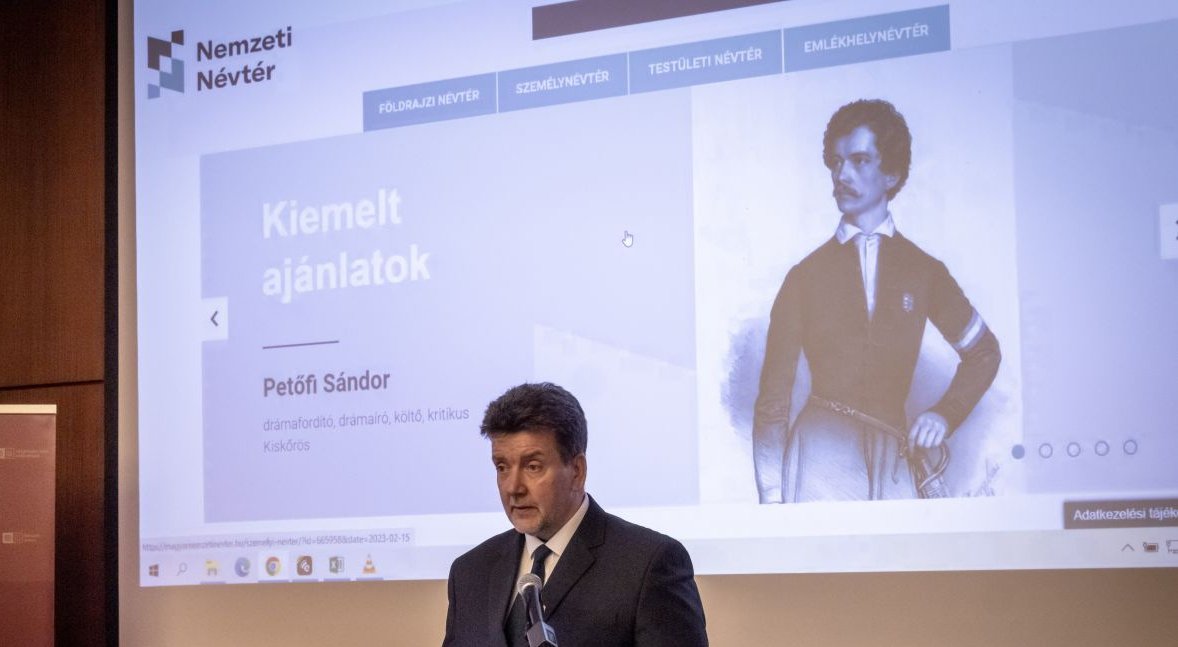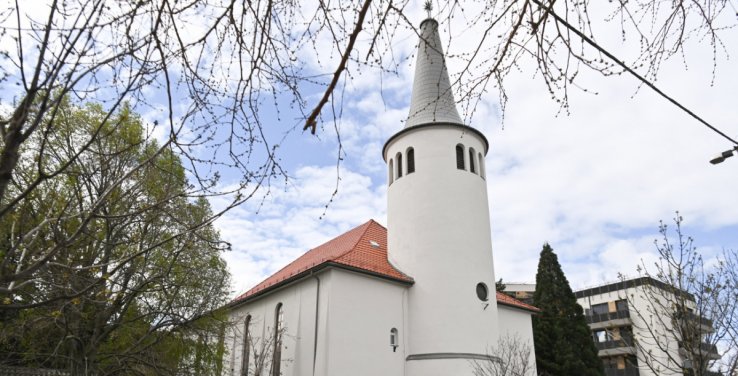The Hungarian National Name Directory platform developed by the National Széchényi Library (OSZK) has been enriched with new content, which was supplemented with the Memorial Site Directory database as of 16 February thanks to the cooperation with the National Heritage Institute (NÖRI), read the NÖRI press release sent to Pestbuda.
Dávid Rózsa, the Director General of OSZK, called the catalogue system, which currently contains more than half a million data sets, a constantly growing public treasure that opens up possible places for the politics of memory, providing versatile access to the documents, characters and values of national culture. He said that the expansion of the content of the directory interfaces previously created by OSZK is currently underway, which will be supplemented with the Memorial Site Directory database in cooperation with NÖRI from 16 February.
"The Hungarian National Name Directory is a good example of how vast the national culture is, how many threads are connected by writers, poets, translators, politicians, counts, books, manuscripts, towns, villages and, thanks to NÖRI, hundreds of national memorials" - emphasised the Director General.

Dávid Rózsa, the Director General of OSZK, speaks at the announcement of the content expansion of the Hungarian National Name Directory at the Széchényi Library on 16 February 2023 (Photo: MTI/Attila Kovács)
Gábor Móczár, the Director General of NÖRI, said that thanks to the cooperation, the material of the Personal Name Directory, Geographical Name Directory and Board Name Directory will be connected with the database of memorial places, in which memorial places across the border will also appear. He elaborated on the fact that this has two goals, one of which is to provide the Hungarian communities living across the border with the opportunity to "collect the places of memory that help them survive and which are important to them and enter them into a large national common database". In addition, they would like to use the database to help those travelling from the motherland to map individual landscape units, as well as to find lesser-known locations.
Péter Szóllás, Head of the Library and Archives Department of the State Secretariat for Culture of the Ministry of Culture and Innovation, said that with the database, which has been under testing since 2019 and will be publicly available from Thursday, the work of the creators of registries serving public collection services, online and offline databases, and data repositories will become easier.
Péter Szilágyi, Deputy State Secretary for National Policy at the Prime Minister's Office welcomed the creation of the Memorial Site Directory to create a unified national-level database, of which Hungarian memorial sites abroad will be an integral part.

Gábor Móczár, the Director General of NÖRI, said that thanks to the cooperation, the material of the Personal Name Directory, Geographical Name Directory and Board Name Directory will be connected with the database of memorial places, in which memorial places across the border will also appear (Photo: National Heritage Institute)
The geographical, personal and body database of the Hungarian National Name Directory was presented by Adrienn Tamásné Kovács, Director of the OSZK's Digital Humanities Centre, who said that the original purpose of creating the application was the transparency of the national culture as a whole, i.e., the interoperability of cultural public collection databases. As she said, nowadays the treasures of the public collection and the information and cultural data related to them can still be discovered in a significant part, isolated at the institutional level. "The OSZK's goal with the Hungarian National Name Directory application it operates is that interested parties do not need to go from archive to archive to obtain the information that is important to them," she added.
The memorial site database was presented by András Kristóf Kósa-Grimm, Head of the NÖRI National Remembrance Department, and coordination officer Balázs János Skola. András Kristóf Kósa-Grimm said that the Memorial Site Directory is divided into three main parts. The first part currently contains the database of 21 national and 60 historical memorial sites.

The original purpose of creating the application was the transparency of the national culture as a whole, i.e., the interoperability of cultural public collection databases. (Photo: National Heritage Institute)
The second part provides examples from more than 6,000 graves in Hungary protected as part of the national graveyard, and gradually all state-protected historical graves will be available. The third part enables the registration of Hungarian memorial sites across the border, with the cooperation and assistance of domestic and cross-border organisations, communities, research institutes and institutions working in the field of national politics. The special feature of the latter system is the proposal submission function: the registered user can contribute to the expansion of the list from home, but also from the location, even with their smartphone.
The Hungarian National Name Directory is a catalogue system launched in 2019, the objective of which is to clearly identify the documents of Hungarian culture, the creators of cultural documents, and the famous places of Hungarian culture, thereby making the cultural databases managed by public collections and knowledge-producing institutions connectable and accessible.
The Hungarian National Name Directory is available at https://magyarnemzetinevter.hu/ (in Hungarian).
Source: National Heritage Institute
Cover photo: The Hungarian National Name Directory is expanding in cooperation with OSZK and NÖRI (Photo: National Heritage Institute)






































Hozzászólások
Log in or register to comment!
Login Registration